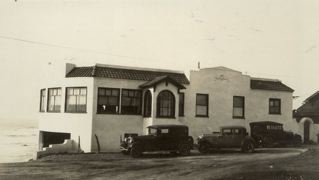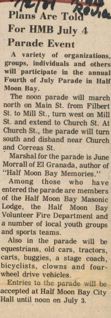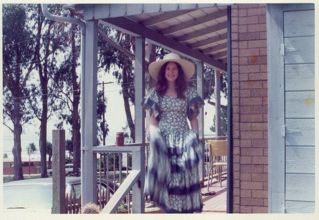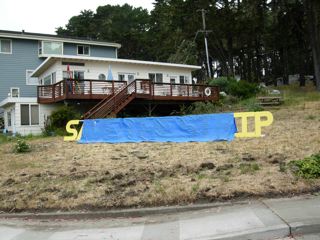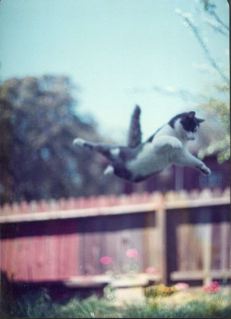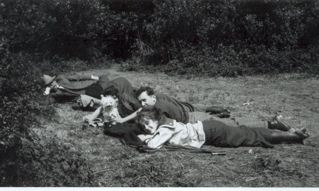In 1980 Dave Andrews (above, left), one of the owners of the Moss Beach Distillery, stood behind the bar of his restaurant overlooking the Fitzgerald Marine Reserve and told me about the roadhouse’s past. The interview with Andrews was for “The Mystery of Half Moon Bay”.
The Distillery was built in 1928 by Frank Torres, built originally, we think, as a residence, eventually a booming restaurant and bar.
There was a garage underneath that was used during Prohibition. Officials came from San Francisco and people who didn’t want to be seen in a bootleg restaurant. They would drive into the restaurant and then come up the back stairs.
We supposed it was used as a bordello. Of course, who knows what was going on.
This bay called Seal Cove was used quite actively during Prohibition. Boats from Canada would arrive outside and drop the booze off the side and float into the channel. There was a lookout on the hill to signal the boats. The signal warned whether there were any federal people here.
The Distillery was used as a hangout for a lot of movie stars, silent film stars that would come down from the City, such as Fatty Arbuckle. A lot of city officials from San Francisco would come down.
(David mentions that there were houses overlooking the ocean, houses that were part of the bordello and burned in the 1930s and 40s).
Story goes there was a triangle going on between the piano player and the jealous husband and so-called Lady in Blue was here in the evenings. Somehow a fight started between them. We think the murder [of the Lady in Blue] was a stabbing on the beach.
The Lady in Blue returned to the restaurant and she’s been here ever since, quite active late at night, moving chairs and walking around the place, slamming doors whenever she feels like she needs attention.
There’s a second story that the so-called “Blue Lady” was involved with silent film star Fatty Arbuckle.
I, myself, have heard her but never seen her.
Our maintenance man [who lives on the property] wakes up feeling somebody in the room, gets the feeling somebody’s always looking, staring at you and so when you wake up and there’s nobody there.
You hear noise and the chairs moving, tables moving and somebody in high heels walking across the floor.
I had people stay here that have heard the piano playing but there’s nobody here. And the piano’s been gone for several years.
One of our cocktail waitresses had her five-year-old daughter in the building. We were closing and the waitress and the bartender were talking to a couple of other people. The child came wandering in here, into the dining room and then she came running out screaming and saying, “There’s somebody in there. There’s a lady in blue.
Everybody walked back into the dining room and nobody was there. But the child obviously saw her.




